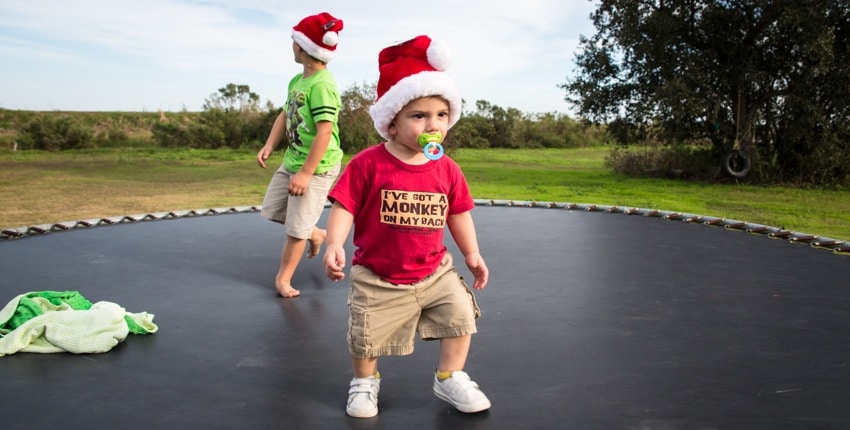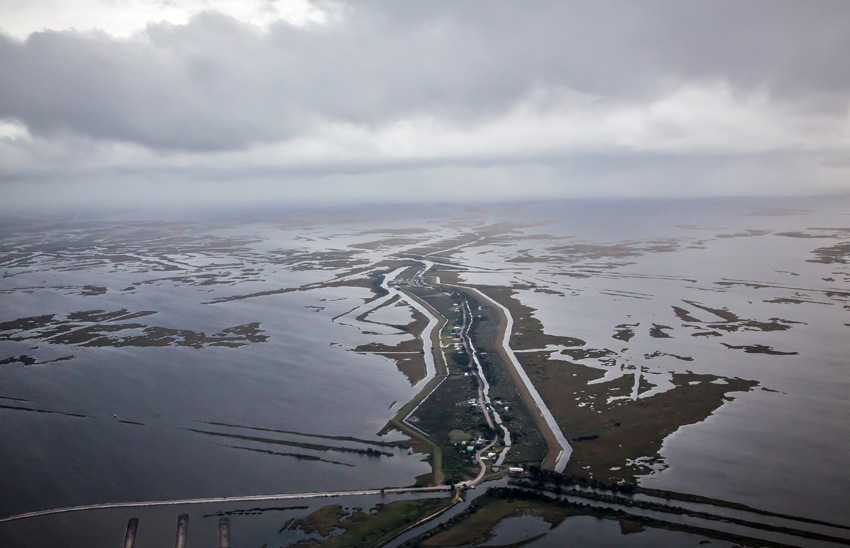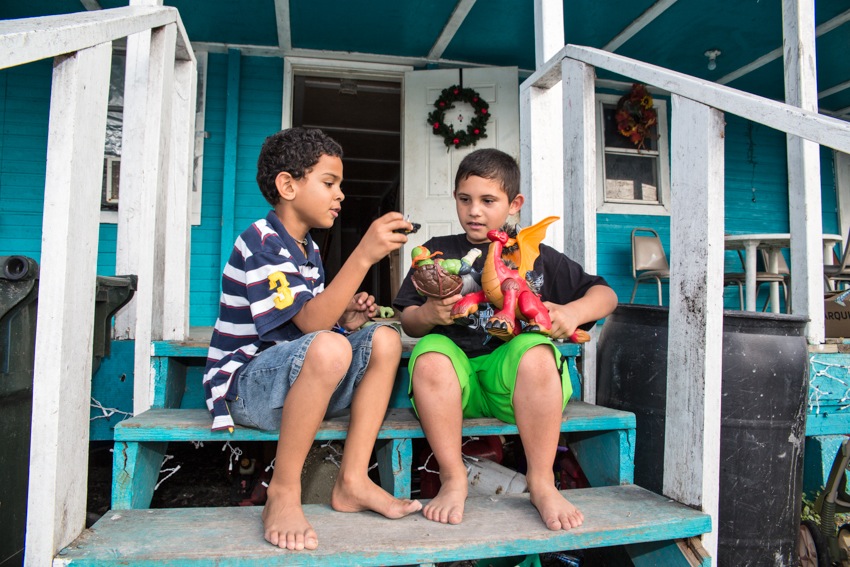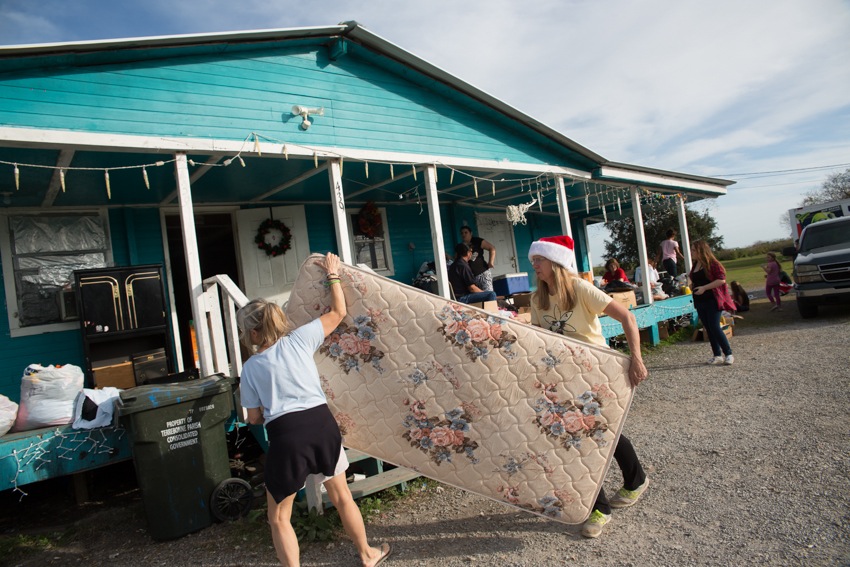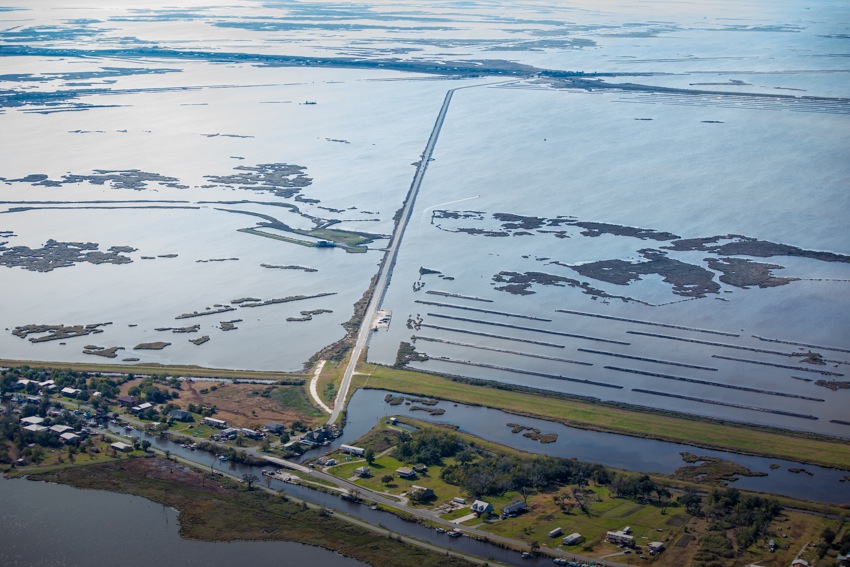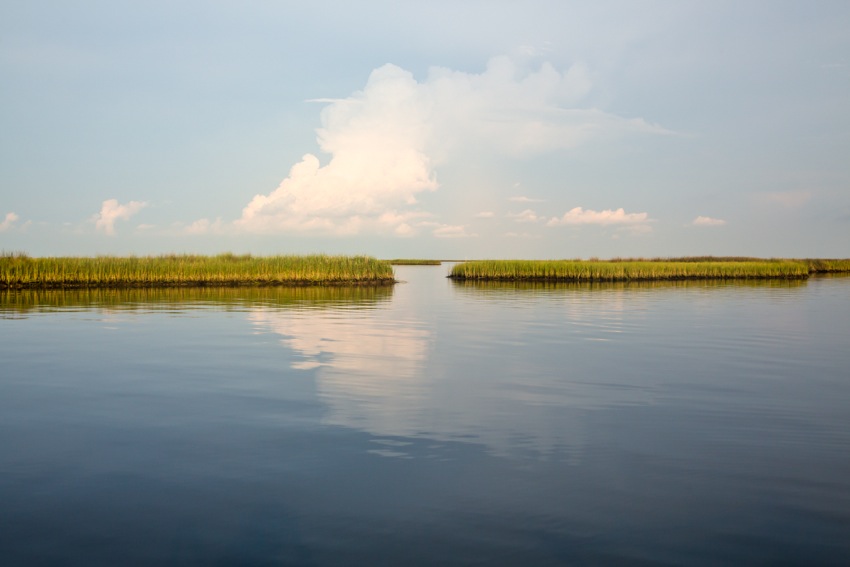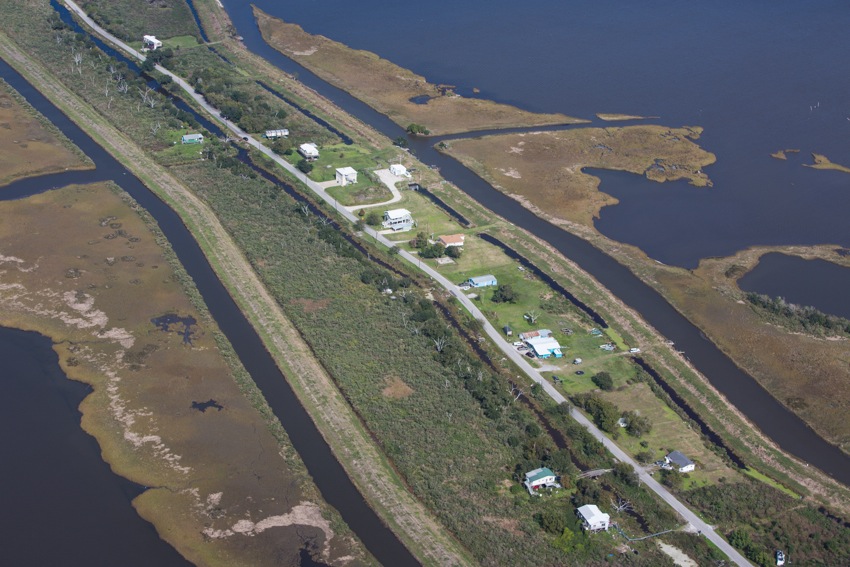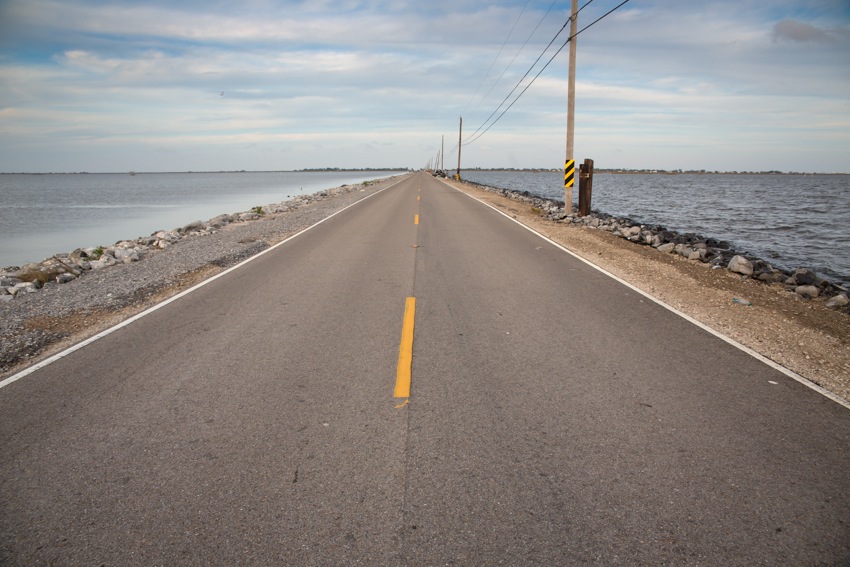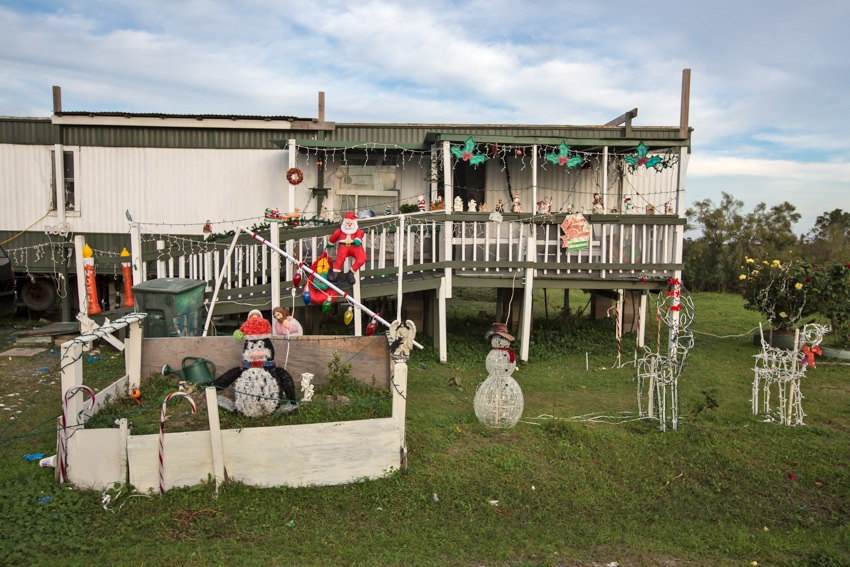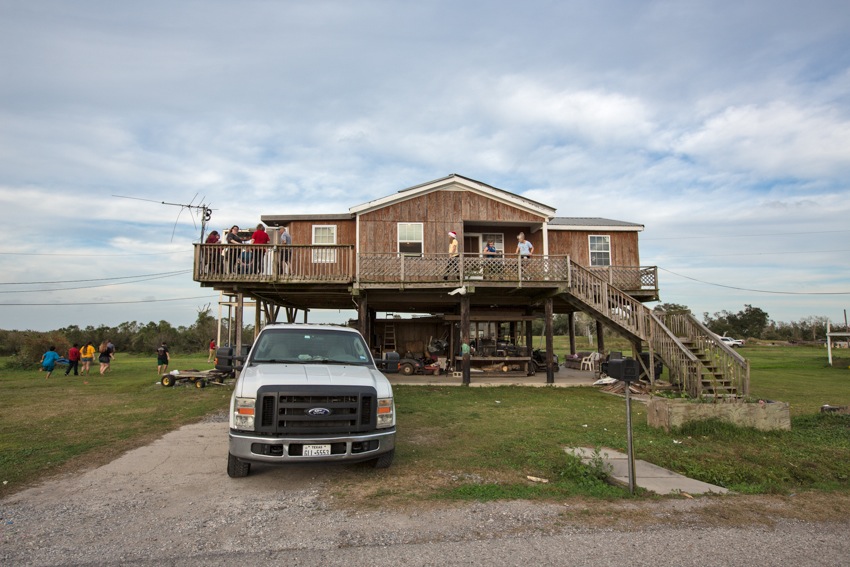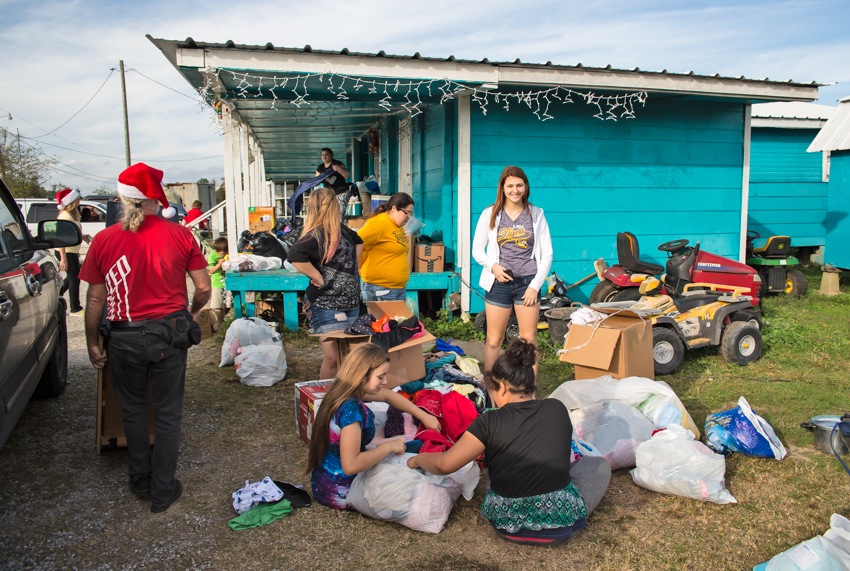Members of the Biloxi-Chitimacha-Choctaw tribe who live on Isle de Jean Charles in southern Louisiana are destined to become some of the first climate change refugees in the United States.
But that doesn’t stop a lifelong resident Chris Burnet from enjoying every day he has left.
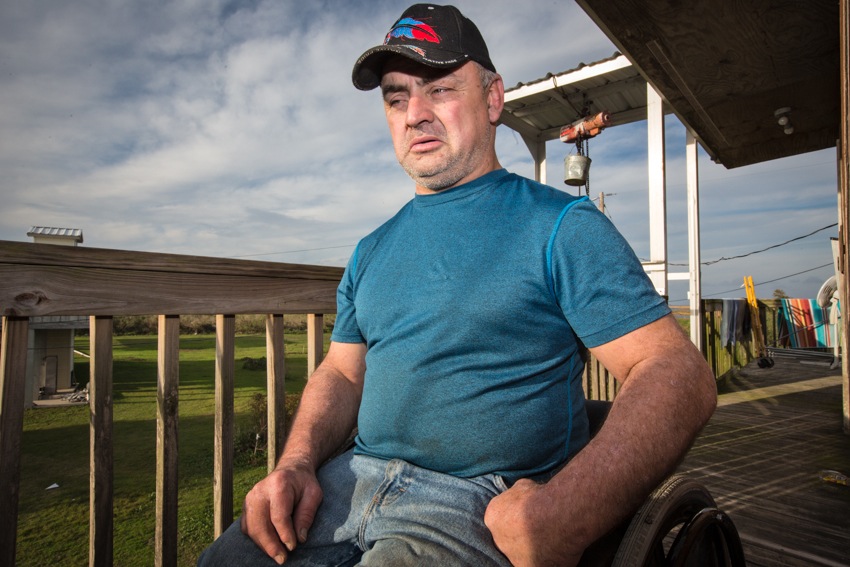
Chris Burnet on his deck on Isle de Jean Charles. ©2015 Julie Dermansky
Aerial view of Isle de Jean Charles, Louisiana. ©2015 Julie Dermansky (Flight made possible by SouthWings)
The island’s population has dropped from its peak of about 350 to about 70. Only 25 homes on the island are full-time residences. The same waters that have sustained the tribe for over 170 years now threaten its existence, as the island sinks and is impacted by coastal erosion.
On an unusually warm December day, Elaine Langley, founder of Plenty International, an aid organization, came with a group of volunteers to deliver Christmas gifts to the remaining residents, as she has done every year since Hurricane Gustav nearly devastated the island in 2008.
Langley and her team stopped at Burnet’s home to bring him a Christmas tree along with other useful gifts. From the deck of his raised home the group enjoyed his view of water on both sides.
“The island is ground zero for climate change,” Langley told DeSmog. “It is impacted by severe storms, rising tides and coastal erosion all at the same time.”
Boys play with donated Christmas gifts on Isle de Jean Charles. ©2015 Julie Dermansky
Elaine Langley and Faith Davis, a schoolteacher from Houston, Texas, deliver a mattress. ©2015 Julie Dermansky
Like much of southern Louisiana’s wetlands, the Isle de Jean Charles in Terrebonne Parish, 75 miles southwest of New Orleans, is eroding away at a fast pace. Since 1930, the Louisiana coast has lost about 190,000 square miles of land, an area the size of Rhode Island.
Island Road connecting Pointe-aux-Chenes with Isle de Jean Charles. ©2015 Julie Dermansky (Flight made possible by SouthWings)
The levees that regulate the Lower Mississippi River flow have robbed the delta of the silt deposits necessary to keep the low-lying land from disappearing under the constant pressure of the tides. And the channels the oil and gas industry began cutting through the marshland in the 1930s hastened saltwater intrusion, further contributing to shoreline erosion.
Channel cut through the marsh off Isle de Jean Charles. ©2015 Julie Dermansky
Aerial view of Isle de Jean Charles. ©2015 Julie Dermansky (Flight made possible by SouthWings)
All that is left of Isle de Jean Charles is a two-mile stretch that is a half mile wide.
Parts of the island are said to have been 11 miles long and 5 miles wide, but that was before the oil and gas industry started cutting channels in the region.
The only way to access the island by car is on Island Road, a two-way street flanked with water on both sides, which is impassible when storms hit.
Island Road connecting Pointe-aux-Chenes with Isle de Jean Charles. ©2015 Julie Dermansky
House with Christmas decorations on Island Road, Isle de Jean Charles’ only street. ©2015 Julie Dermansky
In 2012, the state released “Louisiana’s Comprehensive Master Plan for a Sustainable Coast.” The $50 billion plan does not include any measure to rebuild or protect the Isle de Jean Charles.
Garret Graves, when he was head of the Coastal Protection Restoration Authority, stated he would have liked to do more to save the tribal lands in Terrebonne Parish, but that it wasn’t feasible.
Albert P. Naquin, chief of the Isle de Jean Charles Biloxi-Chitimacha-Choctaw tribe, hasn’t given up hope that something might change, that perhaps a way to save the island might be found, although he relocated his family and now lives 20 miles away.
It isn’t just the disappearing land of his ancestors that troubles him. It is his tribe’s culture too. Short of saving the island, he had hoped to find land the tribe could resettle on as a group, but dropped the idea because some were determined to stay.
He compares the island to a drowning person who comes up for a second time. “You can still hang in there when you come up for air the second time,” Naquin told DeSmog. “It is the third time that there is no coming up from.”
Elaine Langley along with volunteers at Chris Burnet’s home on Isle de Jean Charles. ©2015 Julie Dermansky
Since Burnet doesn’t know how much longer it will be possible to live on the island, he plans to make every day count.
“I will leave when it is time for me to go. It’s just not that time yet,” he said.
And Langley plans to keep supplying the island’s children with the presents they request for as long as she can.
“Though you can’t stop the water, while people are still around at least you can bring them some holiday joy,” she said.
Volunteers drop off Christmas gifts and needed supplies on Isle de Jean Charles. ©2015 Julie Dermansky
Children playing on Isle de Jean Charles. ©2015 Julie Dermansky
Subscribe to our newsletter
Stay up to date with DeSmog news and alerts


